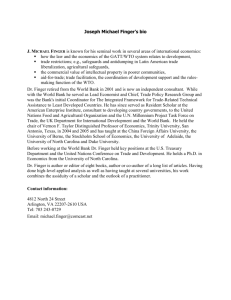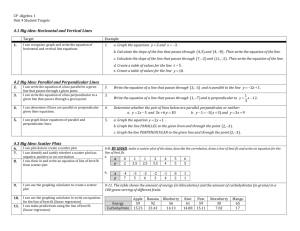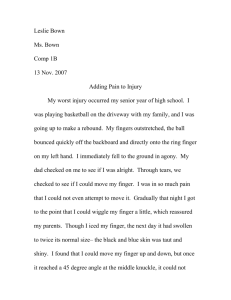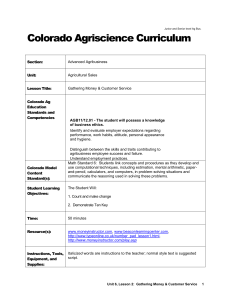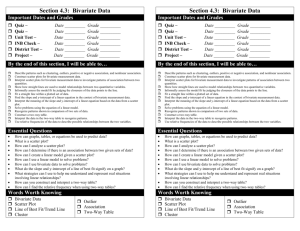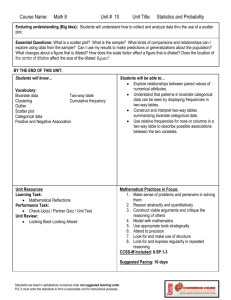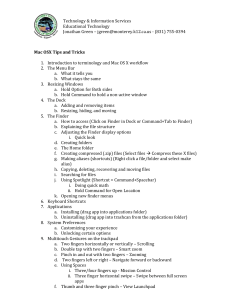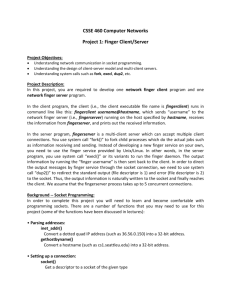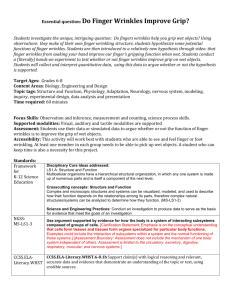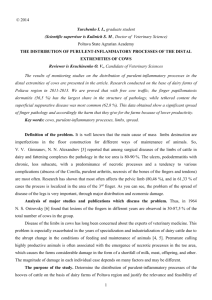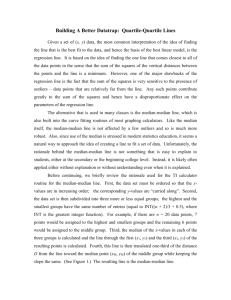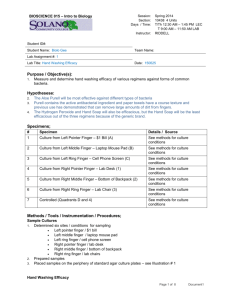WORD
advertisement
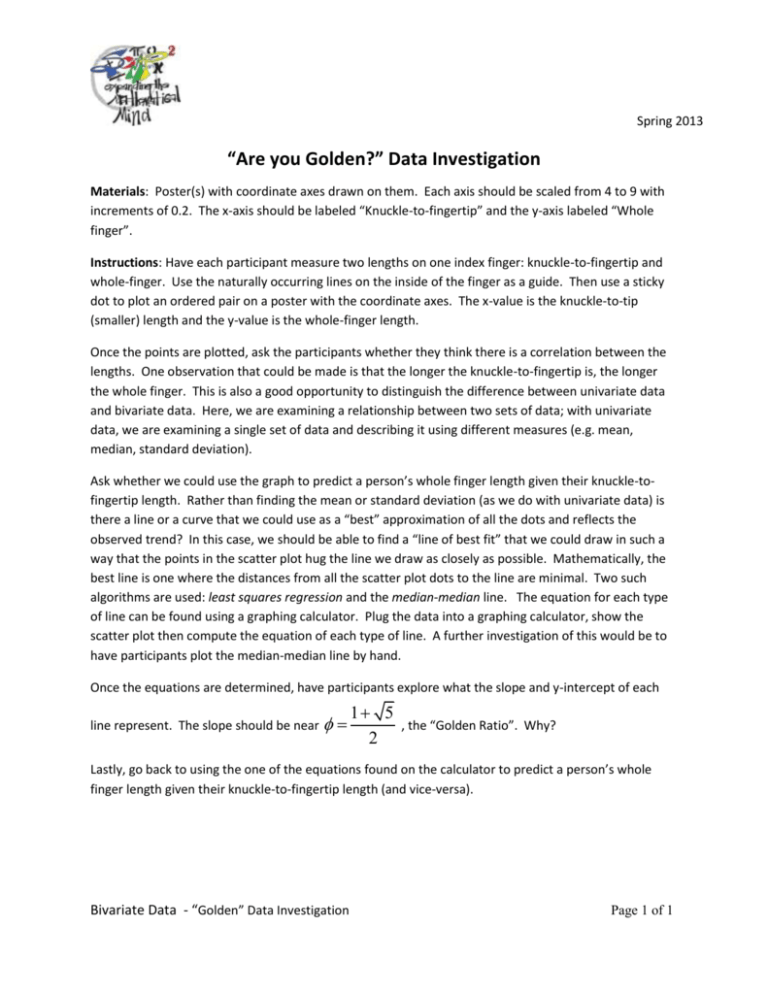
Spring 2013 “Are you Golden?” Data Investigation Materials: Poster(s) with coordinate axes drawn on them. Each axis should be scaled from 4 to 9 with increments of 0.2. The x-axis should be labeled “Knuckle-to-fingertip” and the y-axis labeled “Whole finger”. Instructions: Have each participant measure two lengths on one index finger: knuckle-to-fingertip and whole-finger. Use the naturally occurring lines on the inside of the finger as a guide. Then use a sticky dot to plot an ordered pair on a poster with the coordinate axes. The x-value is the knuckle-to-tip (smaller) length and the y-value is the whole-finger length. Once the points are plotted, ask the participants whether they think there is a correlation between the lengths. One observation that could be made is that the longer the knuckle-to-fingertip is, the longer the whole finger. This is also a good opportunity to distinguish the difference between univariate data and bivariate data. Here, we are examining a relationship between two sets of data; with univariate data, we are examining a single set of data and describing it using different measures (e.g. mean, median, standard deviation). Ask whether we could use the graph to predict a person’s whole finger length given their knuckle-tofingertip length. Rather than finding the mean or standard deviation (as we do with univariate data) is there a line or a curve that we could use as a “best” approximation of all the dots and reflects the observed trend? In this case, we should be able to find a “line of best fit” that we could draw in such a way that the points in the scatter plot hug the line we draw as closely as possible. Mathematically, the best line is one where the distances from all the scatter plot dots to the line are minimal. Two such algorithms are used: least squares regression and the median-median line. The equation for each type of line can be found using a graphing calculator. Plug the data into a graphing calculator, show the scatter plot then compute the equation of each type of line. A further investigation of this would be to have participants plot the median-median line by hand. Once the equations are determined, have participants explore what the slope and y-intercept of each line represent. The slope should be near 1 5 2 , the “Golden Ratio”. Why? Lastly, go back to using the one of the equations found on the calculator to predict a person’s whole finger length given their knuckle-to-fingertip length (and vice-versa). Bivariate Data - “Golden” Data Investigation Page 1 of 1



